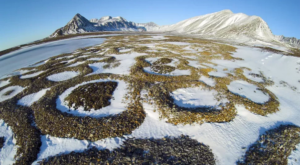Some of the most breathtaking zen garden patterns on the planet owe their existence to an unlikely artist: thousands of tiny “ice needles.” From swirls to circles to orderly rows, each delicate design is created when similarly-sized stones clump together across a landscape.
New research published Oct. 5 in the Proceedings of the National Academy of Sciences documents, for the first time, how ice needles create intricate patterns of stone in various landscapes. As ice needles freeze, they nudge small rocks to one side or another. Over time, the rocks become concentrated in one area, forming a design. The work confirms more than a century’s worth of scientific speculation about the relationship between ice needles and stone patterns, said study coauthor Bernard Hallet, a geologist at the University of Washington. And it might shed light on the origins of an even more mysterious set of patterns — ones found on Mars.
Shallow earthquake in Athens – The epicenter was under the city at Marousi district
Ice needles form when there is an imbalance between the temperature of moist soil and the temperature of the air. At night, certain types of dirt “exhale”, contracting with the drop in temperature. Simultaneously, water in the soil is drawn upward by capillary action, the molecules of water sticking to the sides of very narrow pores in the ground. But as this water rises and hits the frosty air, it turns to ice, freezing into a crystalline needle-like shape.
Read more: Space
Ask me anything
Explore related questions





